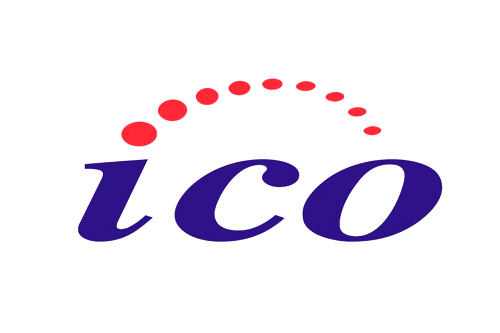Four Novelties from 2017 That Will Drive Innovation
Philipp Kristian Diekhöner
Why do we upgrade to the latest iPhone, download a hot new app, or buy into the latest subscription service? It’s about more than specs or features; we ultimately look to enrich our lives. Innovation, like all progress, is the outcome of a collective leap of faith made in the hopes of attaining a better life. It expresses the essence of the universal human strive for happiness, enacted through our economic decisions.
Rational thoughts rarely influence such decisions, argue globally recognized voices such as Simon Sinek. His video on the “golden circle” explains how feelings, decision-making and behavior happen in a section of our brains that doesn’t deal with language, analysis or rational thought. Trust – e.g. in a better future, company or promise – expresses itself primarily as a feeling instead of logical thought. Bear this in mind as I take you through some of the phenomena I found worth mentioning from this year. (I’ve omitted the remarkable rise of Bitcoin itself since so much has been written on it.) Here are some of my favorite discoveries of 2017:
Savings Squirrels
Anyone who watched Ice Age will have a good idea of the dedication squirrels display when it concerns safekeeping their prized possessions. It is the same story for the “savings squirrel,” a customer archetype that’s giving the financial sector a good challenge.
Savings squirrels are educated, well-earning younger professionals without dependents, who mysteriously do not invest their savings. Instead, they squirrel away vast amounts of cash in their deposit accounts where it sits around, earning little interest. Unlike the typical return-hungry, risk-tolerant young gun investor who would happily make short and long-term bets to harvest a sweet return, savings squirrels revel in the flexibility and freedom of amassing liquidity and gladly pay a high price for it in the form of opportunity cost.
I came across this profile many times over the course of the year. Its rise in numbers seems logical given financial markets this year have been repeatedly described as frothy. Most likely, savings squirrels are driven by distrust in financial markets and this behavior is exacerbated by the perceived complexity of making smart investment decisions.
Serving these savers may require a lot more than investment education. It necessitates an approach that cuts the perceived complexity and provides reassurance. By eliminating barriers to investing and building trust in solid returns with the help of great user experience and smart technology, fintech startups may stand a better chance than incumbents at serving this interesting subset of customers.

ICO Bounties
Whatever your associations with the word “bounty,” it’s one of the key building blocks of the thriving ICO ecosystem which defined much of the conversation in 2017. It rewards individuals who agree to spread the word about a token sale with a certain allocation of the tokens being raised. Rewards vary by social media influence of the individual, as measured in followers and engagement, and are awarded for help rendered in the form of posts and reposts, reviews, translation of materials and more.
It’s like hiring a PR team to sell the public on buying the new currency you are creating (and then paying them with it) – not unlike compensating such efforts in equity, or influencer marketing that provides free product samples to reviewers. The multiplier effect can be substantial, especially if bounties are generously dimensioned.
CVC Explorations
Corporate Venture Capital arms (CVCs) have caught on globally, and particularly so in Asia. In the first quarter of 2017, corporate deal participation almost doubled compared to the first quarter of 2016. It appears many recently established corporate venture capital arms are determined to start on a high by traveling the world extensively in search of investable companies. Deals resulting from this screening activity will probably lead to unexpected new avenues for corporates and startups to collaborate and expand their respective business.
What’s bizarre about this development is that one would think most corporates of a certain size already have a global presence and connections to leverage in identifying startups to invest in. Yet, corporate workforces to this day rarely intermingle with the startup folk. The global co-working movement is challenging that status quo, though we can expect this change to take a while. Newly-minted CVC functions therefore have an exciting and important mandate.
CryptoKitties
CryptoKitties are a new breed of immortal crypto-felines which can be purchased, traded, and multiplied. These adorable (but perhaps not very useful) virtual pets are purchased with real cryptocurrency and specimens already changed hands at valuations in excess of $100,000.
Ownership titles are managed with blockchain technology, allowing for accurate, reliable and traceable transfer of kitties among users. Those possessing more than one specimen may breed new, unique kittens. CryptoKitties now account for over 10% of total Ethereum traffic.
CrpyoKitties teaches us a couple of things. It shows how substantial our trust in cryptocurrencies has become. People pay significant sums for a virtual pet because they trust its market value. The sudden rise of crypto-affluent individuals drives a sort of conspicuous consumption: CryptoKitties are the first crypto-asset I would describe as a virtual luxury good; perhaps similar to collecting art in the offline world. It demonstrates the increasing creativity and versatility of blockchain applications and points to a far broader application scope than most people may imagine.
What’s most remarkable, though, is the excessive media coverage every noteworthy novelty in crypto seems to attract, which probably hints at how much we expect this space to impact our economic and social lives in years to come.








